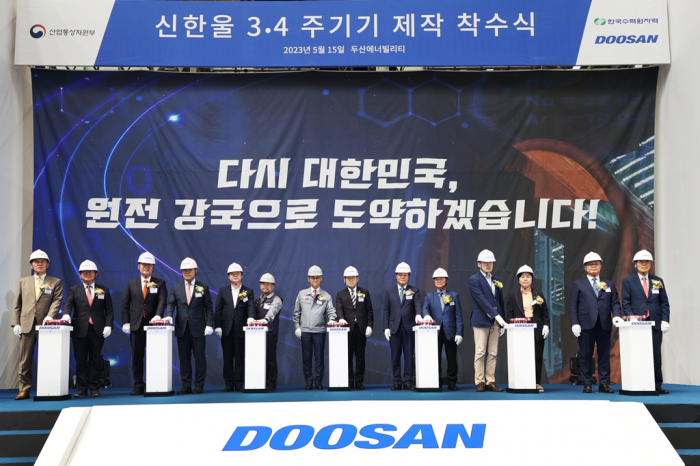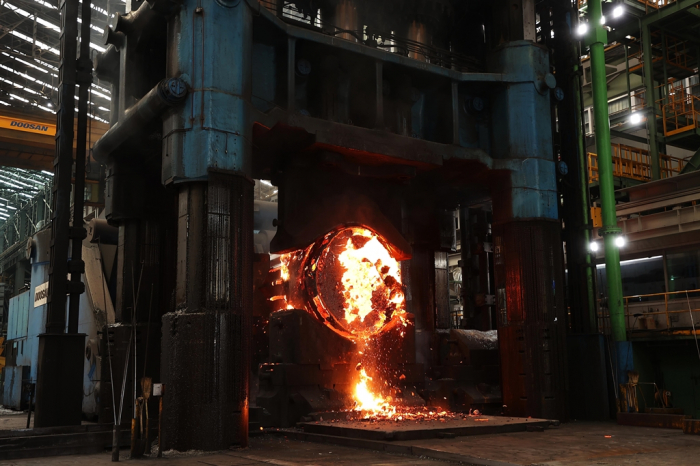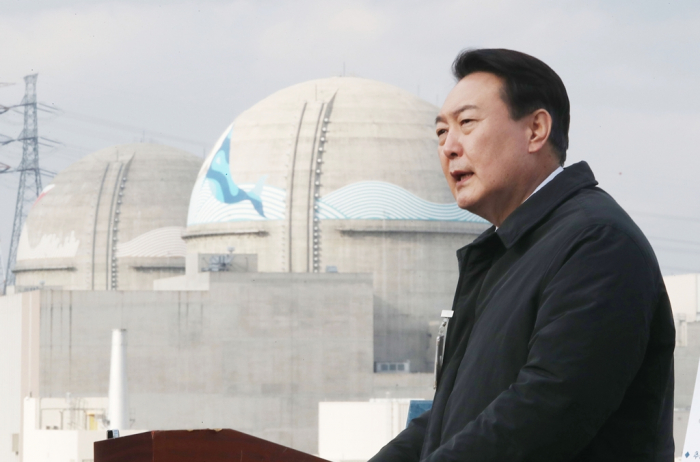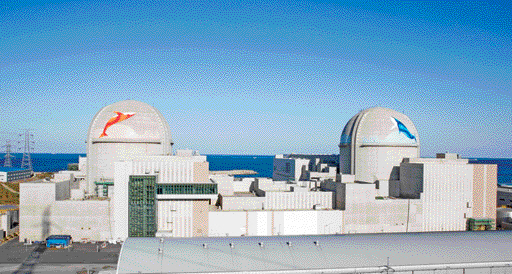Business & Politics
Korea starts building Shin Hanul, reviving aim to be nuclear powerhouse
The project to build two nuclear power plants will also improve Korea’s energy security and help achieve carbon neutrality
By May 15, 2023 (Gmt+09:00)
3
Min read
Most Read
MBK’s Korea Zinc takeover attempt to spur search for white knights


Korea Zinc, MBK face proxy war for zinc smelter


Korea Zinc shares skyrocket after buybacks in tender offer


Lotte to liquidate rubber JV in Malaysia, sell overseas assets for $1 bn


Samsung to unveil 400-layer bonding vertical NAND for AI servers by 2026



South Korea has begun construction of the main parts of the Shin Hanul nuclear reactors No. 3 and No. 4, reviving its goal of becoming a global nuclear powerhouse.
The project to build two nuclear power plants with a capacity of 1,400 megawatts each will also help the country improve its energy security and achieve carbon neutrality, government officials said on Monday.
The Ministry of Trade, Industry and Energy said a ceremony to commence the production of the main equipment for Shin Hanul units 3 and 4 was held at Doosan Enerbility Co., a leading Korean nuclear reactor manufacturer.
“The promise of our government to promptly and efficiently resume the construction of the two reactors has been fulfilled,” Minister Lee Chang-yang said at the ceremony.
“One year after the government’s renewed push for the nuclear power industry, I would say Korea’s nuclear power plant ecosystem has been fully restored.”

In March, Korea Hydro & Nuclear Power Co. and Doosan Enerbility signed a 2.9 trillion won ($2.2 billion) contract to supply main equipment for the government.
The construction of the two reactors, for which the foundation work was completed during the previous Moon Jae-in administration, came to a standstill in October 2017 as the former president canceled all plans to build new nuclear power plants.
The current government under President Yoon Suk Yeol originally planned to start construction of the two reactors in the first half of 2025 but moved up the schedule to break ground on the plants in Uljin, 330 km southeast of Seoul, in 2024.
The government now expects construction of the Shin Hanul unit 3 and unit 4 to be completed by 2032 and 2033, respectively.
AUXILIARY WORK
In addition to the construction of the reactors’ main components, contracts for auxiliary equipment such as pumps, pipes and cables worth a combined 2 trillion won will be up for grabs over the next decade.

Doosan Enerbility has already placed orders for work with 460 domestic nuclear power plant partners for the production of the main equipment.
It’s the first time in nine years that such a large-scale order has been placed in the local market since the construction of Shin-Kori units 5 and 6 in 2014, industry officials said.
Last December, the Shin Hanul unit 1, the country’s 27th nuclear reactor, in Uljin, North Gyeongsang Province, went into full operation.
The reactor, which broke ground for construction in 2010, was initially scheduled to begin commercial operations in 2017. But the plan was delayed due to an earthquake in the southeastern city of Gyeongju, near Uljin.
Shin Hanul units are all advanced pressurized water nuclear reactors known as APR-1400, also referred to as Korea’s next-generation reactor model. It was built with key equipment that was domestically developed.
The APR-1400 model was also adopted for the Barakah nuclear power plant project in the United Arab Emirates, undertaken by Korean companies.

SMALL MODULAR REACTORS
President Yoon, who took office in May 2022, pledged to rescind his predecessor’s policy of a gradual nuclear phase-out and increase dependence on nuclear energy to achieve its carbon-free goals.
Yoon said his government will also promote the development of small modular reactors (SMRs), citing Korea’s increased reliance on fossil fuels.
The government in December vowed to invest 400 billion won in the development of SMRs and double its annual budget for the industry’s R&D projects and job creation to 2 trillion won in 2023.
In a turnaround from the previous government, Yoon also said his government is striving to export 10 nuclear power plants by 2030.
On Monday, Minister Lee said the government plans to train 4,500 nuclear power professionals by 2030.
The government will also discuss with Korea Hydro & Nuclear Power and Korea Electric Power Corp. (KEPCO) to increase their workforce by an additional 4,000 people this year.
"Major countries are focusing on nuclear power as one of the alternatives to overcome the current energy crisis,” said Minister Lee. “We will also support our companies with consistent and predictable nuclear power policy.”
Write to Jae-Fu Kim at hu@hankyung.com
In-Soo Nam edited this article.
More to Read
-
 EnergyKHNP closes in on final deal to build nuclear plant in Poland: PGE CEO
EnergyKHNP closes in on final deal to build nuclear plant in Poland: PGE CEOApr 24, 2023 (Gmt+09:00)
3 Min read -
 EnergyKorea’s small nuclear reactor technology falls behind global peers
EnergyKorea’s small nuclear reactor technology falls behind global peersMar 31, 2023 (Gmt+09:00)
3 Min read -
 Business & PoliticsShin Hanul revives Korea’s aim to become global nuclear powerhouse
Business & PoliticsShin Hanul revives Korea’s aim to become global nuclear powerhouseDec 14, 2022 (Gmt+09:00)
3 Min read -
 Samsung GroupSamsung’s Lee visits UAE nuclear plant project on first trip as chairman
Samsung GroupSamsung’s Lee visits UAE nuclear plant project on first trip as chairmanDec 07, 2022 (Gmt+09:00)
2 Min read -
 ConstructionDoosan Enerbility signs $1.2 billion deal to build nuclear plant in Egypt
ConstructionDoosan Enerbility signs $1.2 billion deal to build nuclear plant in EgyptNov 10, 2022 (Gmt+09:00)
1 Min read
Comment 0
LOG IN


